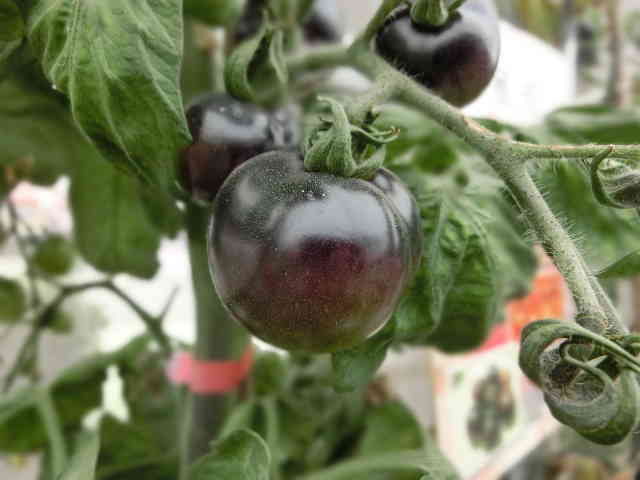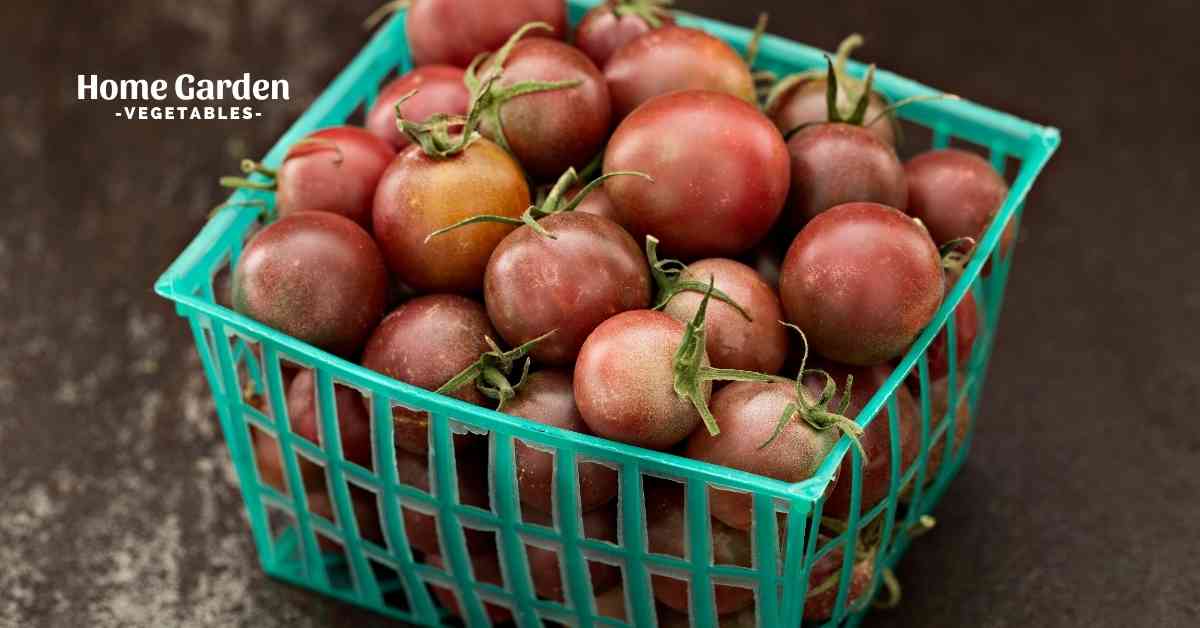Tomatoes are attractive, juicy and work perfectly with so many different dishes. They’re even tastier when you harvest homegrown heirloom tomatoes right from your garden! Speaking of heirloom tomatoes, black cherry is an excellent option for gardeners who are looking for the superior, traditional flavors without putting in much effort in growing.
Black cherry is best grown outdoors in a sunny spot, but will also produce a good crop when grown in a greenhouse. Learn all about black cherry tomatoes, including black cherry tomato disease resistance, to enjoy the perfect growing experience.
Reader Poll: What online courses would interest you?

Black Cherry Plant Description
Black cherry is a high-yielding indeterminate variety that grows vigorously to produce large, sprawling vines. The mature height is around 70”, while the spread is about 36”. Stakes or trellises are required to support the weight of the fruit and foliage and keep the vines off the ground. They grow from open-pollinated seeds and take between 65 to 75 days to grow to maturity once you transplant them in the garden.
Black Cherry Fruit
Once the vines mature, you’ll find clusters of beautiful, round 1” fruits. Black cherry tomatoes are an attractive deep red to mahogany brown and have a blackish hue to them. They have a rich, sweet flavor and firm texture. The taste is delicious for snacking directly off the vines or adding to salads. While you may ripen them off the vine, for best flavors, let them ripen fully on the vine and pick them regularly as they are ready.
As they ripen, the fruits turn blackish in color and readily come off the vine with just a slight pull. Be careful not to disturb the rest of the plant while harvesting since it’s an indeterminate tomato that will continue giving fruit until frost kills it off.
Subscribe to our newsletter!
One of the best features of black cherry tomato, and all other heirlooms is that you’ll just need to purchase the seeds once. Once the first season turns out a success and you have healthy fruits to enjoy, you can continue saving seeds from them to grow them the coming season. The saved seeds will produce the same excellent fruit as the one in the past season, no matter how many seasons you continue growing it!
Black Cherry Disease Resistance
One of the drawbacks of growing heirloom tomatoes is that you may not enjoy the same level of disease resistance as that of hybrid tomatoes. That’s because hybrid tomatoes are intentionally bred for favorable characteristics, including disease resistance. Thankfully, this isn’t something to worry about when growing black cherry tomato.
Black cherry tomato, despite being an heirloom, is naturally disease resistant. The variety resists some common disorders typical of tomato plants. Blossom end rot is a common physiological disorder in tomato plants, typically those growing in sandy soils or in very hot, dry climates. If your garden has a history of blossom end rot or is deficient in micronutrients, especially calcium, growing black cherry will lower the chances of experiencing problems.
Black Cherry Problems
Though black cherry is much more resistant to tomato plant diseases as compared to many other heirlooms, it’s important to understand that it’s not completely immune. There are still a number of diseases you’ll need to keep a watch for if you want to grow perfect, blemish-free black cherry tomatoes.
Here is a list of some common problems that black cherry can fall prey to:
Blossom Drop
Blossom drop is a condition in which flowers drop off the plant without setting any fruit. A drastic drop or rise in temperature is usually the cause for blossom drop. When the temperatures fall below 55 degrees Fahrenheit, or rise above 75 degrees Fahrenheit, you’ll need to be extra careful to protect your crop against blossom drop. While you can’t change the weather, keep your plants well watered and fed. Shading it during the hottest part of the day also helps it sustain growth in hot weather.
Fruit Cracking
Black cherry tomatoes are susceptible to fruit cracking, especially in rainy weather. When dry weather follows heavy rainfall, fruits are likely to crack or split. The damage is more likely to affect tomatoes that have started ripening, although green tomatoes may also crack. Cracking occurs as a result of rapid changes in soil moisture level.
Maintain optimal soil moisture, especially in dry weather. Once the fruit cracks, the best option is to pick it off the vine and ripen it indoors. Leaving it on the vine leaves it prone to pests and rotting.
Fusarium Wilt
Fusarium wilt is another problem you need to keep an eye out for. It’s a soil-borne fungal disease that’s most likely to attack the plants when the weather is warm. The fungus is most active when the soil temperature is 82 degrees Fahrenheit. Its effects on the plants are even more severe if the soil is acidic. Initially, wilting begins on one side of the plant. The plants appear to wilt by the morning and recover somewhat by evening. Eventually, the entire plant turns yellow and wilts.
Purchase disease free seeds from reliable manufacturers to limit chances of fusarium wilt in the crop. Once infected, the plants will need to be removed from the garden to prevent the infection from spreading. After the end of the season, remove the plant debris and clean the soil to prevent reinfection in the coming seasons.
Conclusion
That’s all about black cherry tomato disease resistance. It’s an ideal heirloom tomato variety to grow if you don’t want the hassle to manage diseases, pests and other problems. At the same time, it also gives you the opportunity to enjoy some classic flavors, preserved by gardeners through the centuries.

